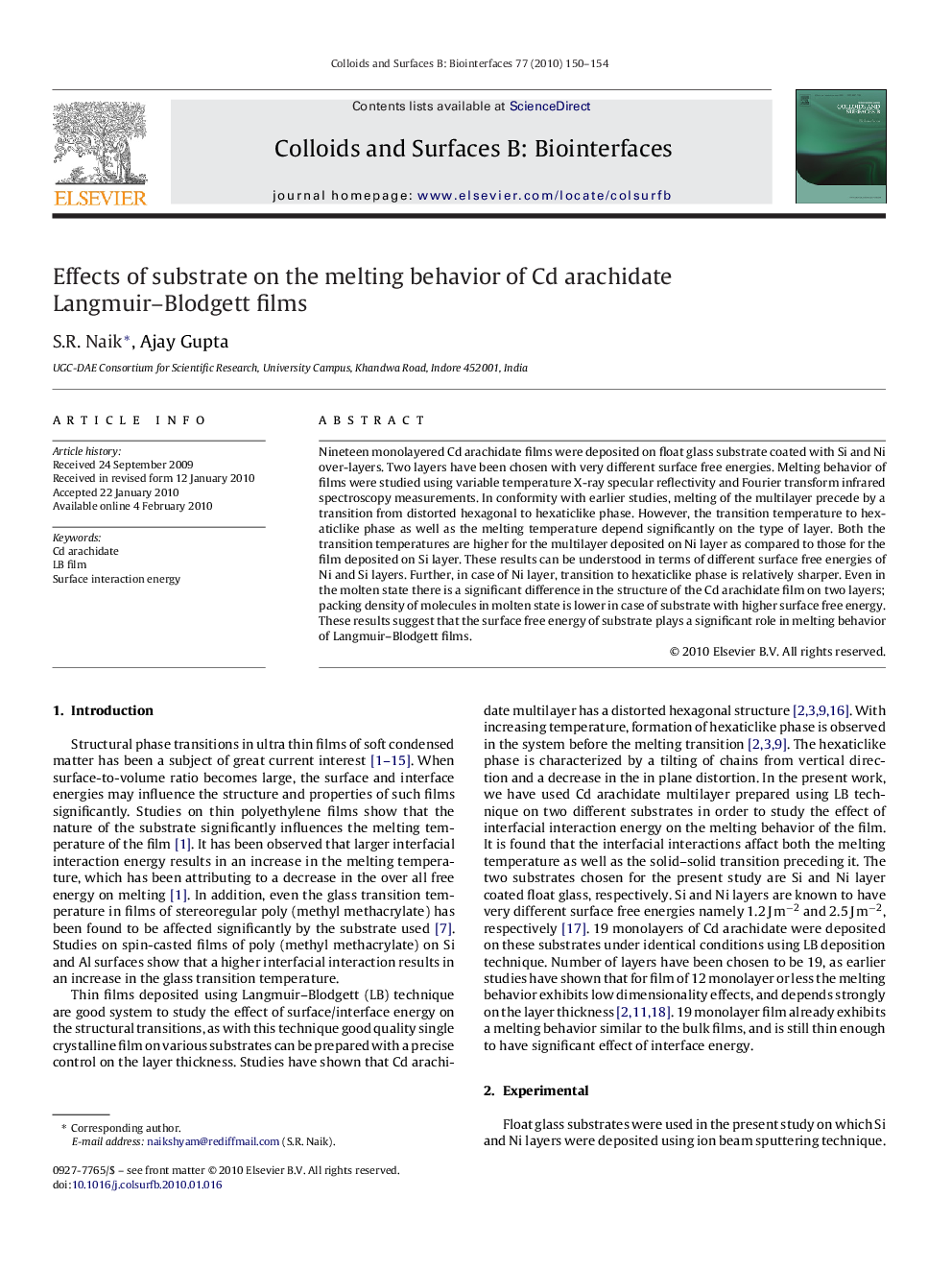| Article ID | Journal | Published Year | Pages | File Type |
|---|---|---|---|---|
| 601489 | Colloids and Surfaces B: Biointerfaces | 2010 | 5 Pages |
Abstract
Nineteen monolayered Cd arachidate films were deposited on float glass substrate coated with Si and Ni over-layers. Two layers have been chosen with very different surface free energies. Melting behavior of films were studied using variable temperature X-ray specular reflectivity and Fourier transform infrared spectroscopy measurements. In conformity with earlier studies, melting of the multilayer precede by a transition from distorted hexagonal to hexaticlike phase. However, the transition temperature to hexaticlike phase as well as the melting temperature depend significantly on the type of layer. Both the transition temperatures are higher for the multilayer deposited on Ni layer as compared to those for the film deposited on Si layer. These results can be understood in terms of different surface free energies of Ni and Si layers. Further, in case of Ni layer, transition to hexaticlike phase is relatively sharper. Even in the molten state there is a significant difference in the structure of the Cd arachidate film on two layers; packing density of molecules in molten state is lower in case of substrate with higher surface free energy. These results suggest that the surface free energy of substrate plays a significant role in melting behavior of Langmuir-Blodgett films.
Keywords
Related Topics
Physical Sciences and Engineering
Chemical Engineering
Colloid and Surface Chemistry
Authors
S.R. Naik, Ajay Gupta,
